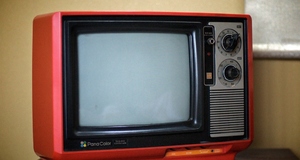The Great War: The Similarities and Differences of Print and Television Media
By
2009, Vol. 1 No. 11 | pg. 1/1
KEYWORDS:
News is more likely to be reported if meets one of the following characterisitics: It concerns elite personalities; It is negative; It is recent; Or it is surprising (Fiske 96). The story of the Bush Administration’s “regrouping” attempt after a “bad week” is all of these things. The President, after a volley of defeats and scandals in the past week including Harriet Miers’s dismissal, Scooter Libby’s indictment, and the death toll in Iraq passing the 2,000 mark, needs to “regroup” and “excite America,” according, respectively, to the Boston Globe and CNN. The newspaper and cable news outlet naturally have differing target audiences, and even though they are reporting on basically the same story, the presentation, coverage, and range and specificity of sources differ as well. However, they don’t differ entirely — messages still exist within the media, language placed in formation and given meaning through interpretation. The Boston Globe, the Boston affiliate of the New York Times, places the beginning of the article headlined “Bush regroups, focuses on war” on the front page of the paper. A matter of national importance such as the presidential agenda would normally be headed for the front page anyway, but the article is placed in the layout with a large jump seven pages later. There is a method to this practice: while trying to grab the reader’s attention on the first page of the newspaper with the current and relevant words “Bush” and “war,” the cognitive style of a newspaper also assumes that the interested reader will turn seven pages to read what is actually, contrary to first glance, a lengthy article. CNN, owned by media mogul Ted Turner, rose to fame and integrity with its aggressive coverage of the Gulf war in 1991. As the first 24-hour cable news outlet, CNN is a primary source of news for many Americans. The story on Bush’s bad week begins with Sen. Harry Reid, (D) Minority Leader, blasting the President and charging him to “get in touch with reality.” This is CNN’s version of a headline, but with a television twist. Unlike the Globe’s use of the words “Bush” and “war,” red-flag words in today’s news and political discussion that entice readers, CNN begins its coverage with a controversial statement by someone with an agenda himself. This instantly sparks a judgment in the viewer’s mind agree or disagree, the lead tries to lure a wide range of viewers from across the political spectrum into wanting to know more.The nature of a newspaper, as one of McLuhan’s “hot media,” is to condense a copious amount of information in a relatively small amount of space — it uses a highly entropic, highly elaborated code. “The elaborated code,” says Fiske, “is geared towards the individual as a person, rather than a status role within a group” (71). Newspapers, while a mass medium, can only appeal to one consumer at a time. Thus, the style of a newspaper is personal, elaborated, and full of information. According to McWhorter, this style is only seen in written language He uses the example of J.K. Rowling’s Harry Potter series to illustrate this point: “To us, Rowling’s [elaborated] phraseology seems ordinary, but it is actually only so in a written language. Indeed, it is only possible in a written language” (McWhorter 9). The oral language of CNN’s soundclips and analysts, on the other hand, appeal to a broad range of people. It is “oriented towards social relations,” and the restricted code speech involved “is indexical of the speaker’s status within the group” (Fiske 71). This means that the speech used by each of the participants in the CNN broadcast represent their titles or status within that group of people. The television station uses metonyms to make this point: Sen. Reid’s statement is portrayed as representative of the entire Democratic Party, while Sen. Cornyn’s statement is shown as representative of the Republican Party. CNN’s time to use on this story is restricted, and so is the code they use. The informality of oral language, even on television, assumes that the viewer is aware of relevant events – this is made clear by Bill Schneider when he refers to what Vice President Dick Cheney’s Chief of Staff, Scooter Libby, “was doing in this matter.” He does not elaborate on what matter he is talking about – television, like oral language, is continuously flowing. Plainly, there is a fundamental difference between written and oral communication – the styles they employ, and the messages they deliver. The Globe story places a primary emphasis on Bush’s turn to focus on the war in Iraq, but upon closer examination there seems to be a message hidden inside the headline. The authors state, with the support of “political specialists,” that “[b]y acting quickly on a Supreme Court pick… Bush can change the political discussion in the country.” This sentiment is echoed later by Rep. Christopher R. Shays, (R) Connecticut, paraphrased by the authors themselves: “Bush must act quickly to trumpet both the successes and failures of the war, and to remind the American people of the need to fight terrorism aggressively,” Shays says. The unadulterated, objective message of the article is stated in the headline, but the true message is in the text. On television, it is perhaps harder to slide a hidden meaning into a news piece – instead, because of the immediacy of oral language, the message is plain for all to see. CNN’s coverage depicts the President’s “bad week” and the Scooter Libby scandal in the spotlight. After introducing the topic of the piece with the two opposing senators, the CNN anchor, Carol Lin, launches into Presidential job approval rating polls, which are unchanged after this “admittedly very bad week.” But what has changed, as political analyst Schneider tells viewers, is American’s approval of President Bush’s management of the government. These numbers are accompanied by visuals, which look suspiciously like PowerPoint slides; Tufte would probably call them “content-free,” especially since the text on the visuals had just been stated by Lin and Schneider. Schneider’s repetition of the word “failure” and his recommendation that the inner circle of the White House “fess up” might be clues that betray his, and thus CNN’s, impartiality. He is, after all, CNN’s senior political analyst. Despite the journalistic differences between the two media, there are a number of parallels in the content of the two stories. Boston University historian Michael Corgan’s claim that Bush “has to recover some sense of competence in the administration” mirrors CNN’s polls of the President’s government management skills. Both sources cite the possibility of a new Supreme Court pick, though they disagree on the effect it will hav on the American people. Perhaps most interestingly, both sources compare Bush’s situation to former President Clinton’s policies. As stated by McLuhan, “the medium is the message,” and it could be that the message, at its raw, informational core, only becomes a message when transmitted through one medium or another. “The content of writing is print or speech,” he claims, “but the reader is almost entirely unaware either of print or of speech” (McLuhan 33). Television and newspaper may be different, but they are still media; written and oral language may be different, but they are still language. This paradox of similarity and difference shows up in any analysis of media – while “the medium is the message,” the message, in its most active, salient form, is the medium. The differences in newspaper and television reporting may seem obvious, but the complexities surrounding the two media must be considered. One uses elaborated codes, the other restricted; one uses written language, the other oral. But despite these fundamental semiotic disparities, both media report the same stories, and both carry within them a message within a message – if the reader or viewer is sharp enough to find them.
Fiske, John. Introduction to Communication Studies, 2nd Edition. London: Routledge, 2000. Klein, Rick, and Peter S. Canellos. “Bush regroups, focuses on war.” Boston Globe, 30 October, 2005, morning final edition, A1+A8. McLuhan, Marshall. Understanding Media. New York: Penguin Books, 1964. McWhorter, John. Doing Our Own Thing: The Degradation of Language and Music and Why We Should Like, Care. New York: Gotham Books, 2003. Tufte, Edward. “The Cognitive Style of PowerPoint.” Cheshire, CT: Graphics Press, 2003. Vivian, John. The Media of Mass Communication, 7th edition, 2006 Update. Boston: Allyn & Bacon, 2006. Suggested Reading from Inquiries Journal
Inquiries Journal provides undergraduate and graduate students around the world a platform for the wide dissemination of academic work over a range of core disciplines. Representing the work of students from hundreds of institutions around the globe, Inquiries Journal's large database of academic articles is completely free. Learn more | Blog | Submit Latest in Business & Communications |


















